Top 10 Most Beautiful Historical Sites in Peru
Peru, located on Latin America's Pacific coast, offers a vast range of weather, ways of life, and historical monuments to discover. Peru is named after a ... read more...Quechua phrase that means 'country of abundance,' referring to the economic prosperity generated by the affluent and technologically advanced Inca civilisation that governed the region for centuries and was preserved alive by indigenous resistance to Spanish colonization. There are several outstanding historic sites to visit in Peru, including the world-famous mountaintop of Machu Picchu, which is a prize for anyone daring enough to take the Inca Trail. The Nazca Lines, Kuélap, and Choquequirao are also renowned tourist destinations. Let's follow Toplist to discover the most beautiful historical sites in Peru.
-
Machu Picchu is an incredible old stone city located along Peru's Inca Trail and is one of the world's most recognized historical monuments. And of course, it's always at number one on the list of the most beautiful historical sites in Peru.
Machu Picchu's ruins, high atop a granite mountain, are thought to have been built by the Inca Yupanqui people for the then-emperor Pachacuti in the mid-fifteenth century. Machu Picchu's exceptional state of preservation is due to the Incas' excellent degree of engineering and architecture, such as the fact that each stone on the site fits together seamlessly.
The semicircular Temple of the Sun, the Temple of the Three Windows, the mausoleum, and the top cemetery are among Machu Picchu's most spectacular monuments. If you haven't arrived by the Inca Trail, there are a number of routes near the site that are suitable for hiking.
The location is well-known, and deservedly so: the metropolis appearing in the clouds takes even the most jaded traveler's breath away. However, with up to 6000 visitors per day permitted, Machu Picchu is becoming increasingly vulnerable to over tourism. Responsible tourism is essential: if you want to go, you must book well in advance or risk disappointment.
Location: Cusco Region, Peru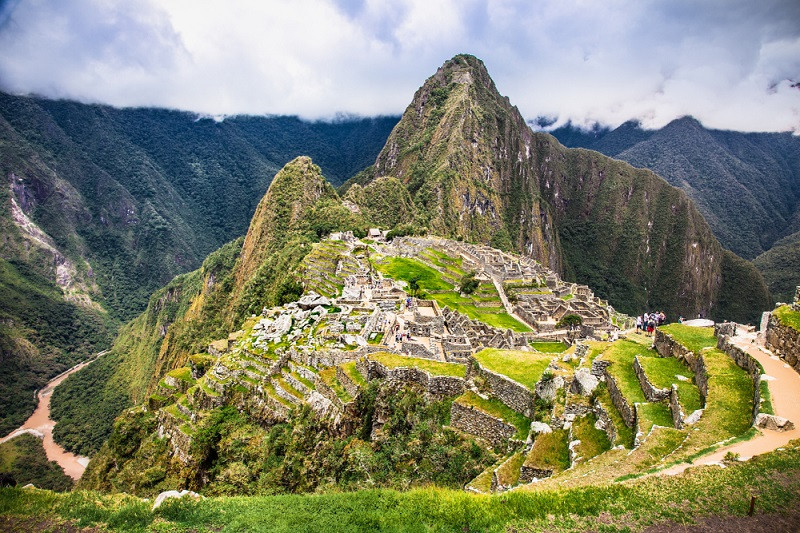
Photo: suckhoedoisong 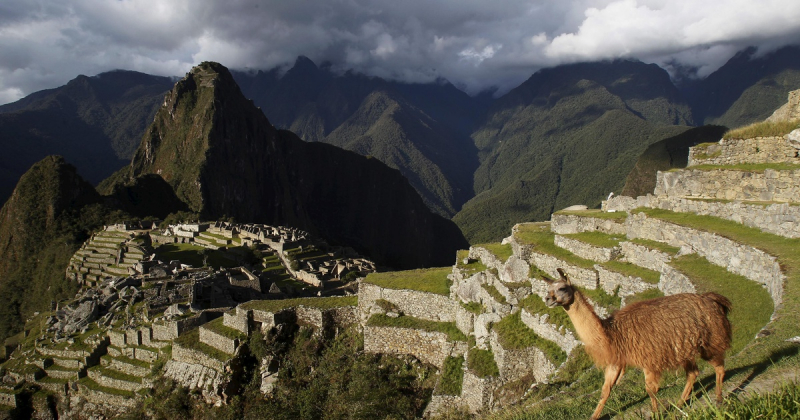
Photo: thanhnien -
Chan Chan is an outstanding site in Peru that is both the world's largest adobe city and the Americas' largest pre-Colombian metropolis.
Chan Chan, the ancient Chimu civilization's capital, grew to prominence around 1300 AD and would have peaked in the 15th century, when the Chimu were supplanted by the Incas, and the city was abandoned. The Chimu were very skilled architects and engineers. The ten Chima monarchs are commemorated with ten citadels at Chan Chan. Because the site lies in the desert, aqueducts and canals were needed to provide water to the city.
Chan Chan is a maze of residences, palaces, fortresses, roadways, storehouses, and temples organized into a well-planned city layout encompassing around 20 square kilometers. The structures at Chan Chan were ornately decorated, with complex friezes depicting animals, legendary creatures, and abstract shapes, some of which can still be seen today. Chan Chan, which is still a large location today, was formerly home to up to 100,000 people. The city's outer reaches have been lost to erosion over the years, but there's still much to see.
Location: La Libertad Region, Peru
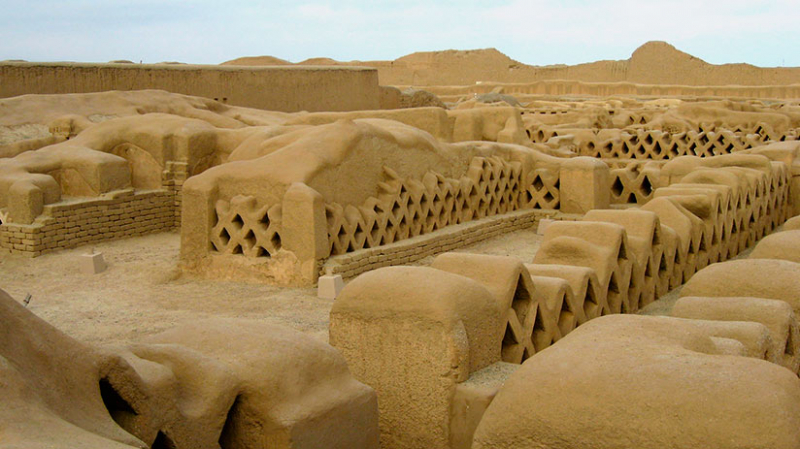
Photo: machutravelperu 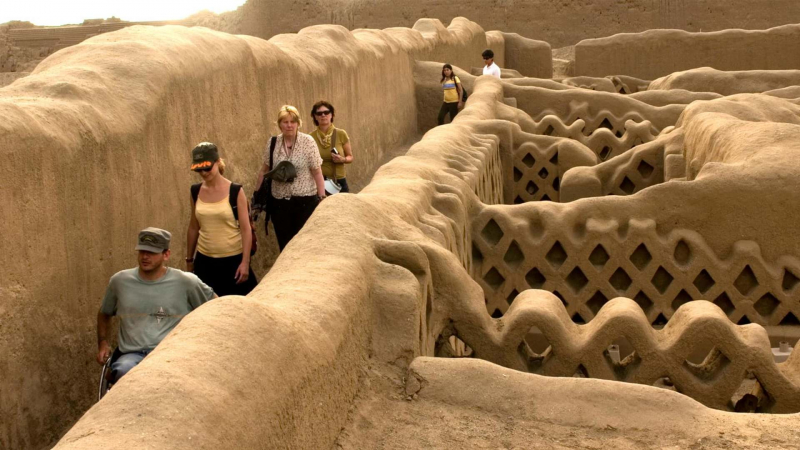
Photo: peru.travel -
In Peru's Nazca Desert, the Nazca Lines are a sequence of gigantic shapes engraved in the dirt known as "geoglyphs." The origin of the Nazca Lines, which span 450 square kilometers of the Pampa Colorada region between the towns of Nazca and Palpa, is a source of much discussion, but they are thought to have been erected by the Nazca Civilization between 500 BC and 500 AD.
A monkey, two humans, one of whom is known as the "astronaut," a hummingbird, a spider, and a tree are among the perplexing shapes. Over 300 geography (geometric figures) and 70 biomorphs (animal/plant drawings) are included, as well as many more straight lines. The shapes were made by shifting darker stones to reveal lighter soil beneath them; the lines would have been visible only from above, leading some to believe that the Nazca could see them. With the variety and uniqueness of the lines, this site is said to be one of the most beautiful historical sites in Peru.
Location: Southern Peru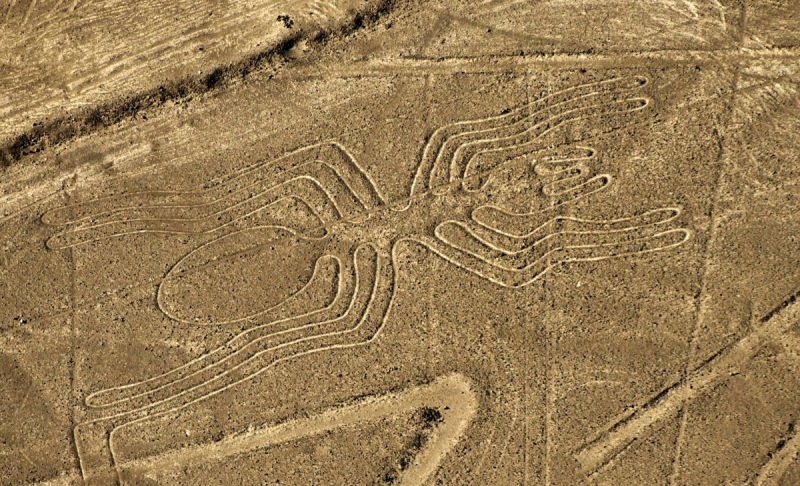
Photo: history 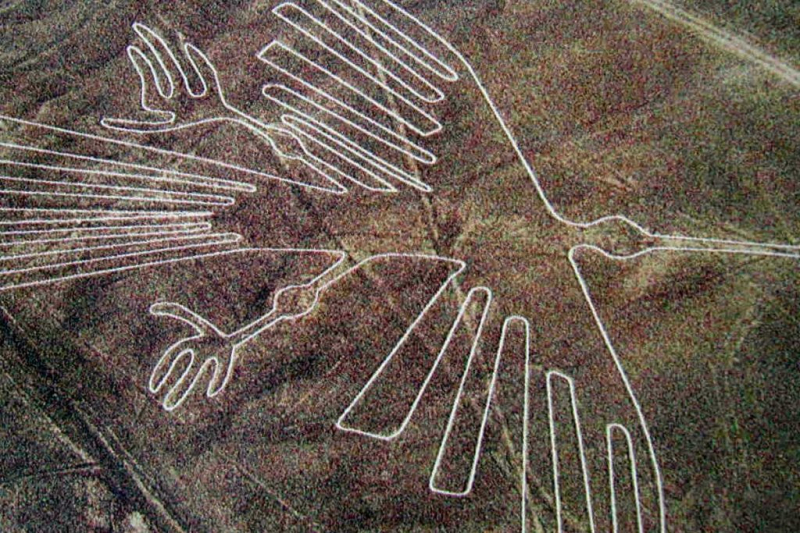
Photo: .machupicchu-trips -
Kuélap, often known as the Macchu Picchu of the North, is a majestic 9th-century citadel that was formerly the stronghold of the Chachapoyas people, a tribe who resided in the region until soon before the Spanish invasion.
Kuélap, at 3,000 meters above sea level, is a spectacular sight, with limestone walls around a village of about 450 stone dwellings. It used to be home to up to 3,000 people, and many of the buildings still have thatched roofs and elaborate woodwork. The stronghold itself has the ruins of an ancient tower, guard posts, and eight-meter-high walls with reinforced entranceways, which were built to keep off enemy groups such as the Huari.
The Chachapoyas people began construction on the site in the 6th century AD, although the majority of the constructions were completed between 900 and 1100 AD. It's unknown whether the Incas actually took control of the site, but it was certainly abandoned by 1570, following the Spanish conquest. The site was rediscovered in 1843, but it wasn't properly explored until the mid-twentieth century.
The Templo Mayor (also known as El Tintero – the inkpot) is the site's most intriguing and spectacular structure, harboring animal bones that are thought to have been sacrificed. According to some archaeologists, the location was once used as a solar calendar. Scattered around the ruins are stone tombs known as ‘purunmachus’, which were built in the shape of people: these were reserved for the mummified remains of ChachapoyasLocation: Amazonas Region, Peru.
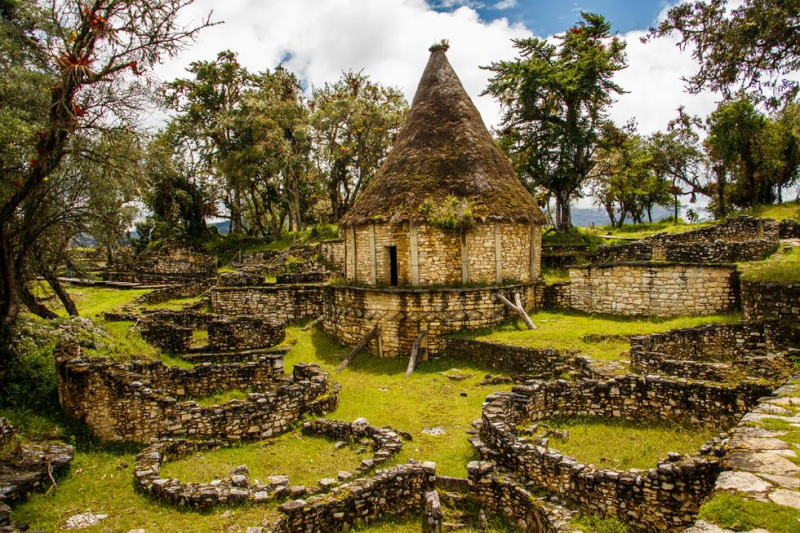
Photo: infobae 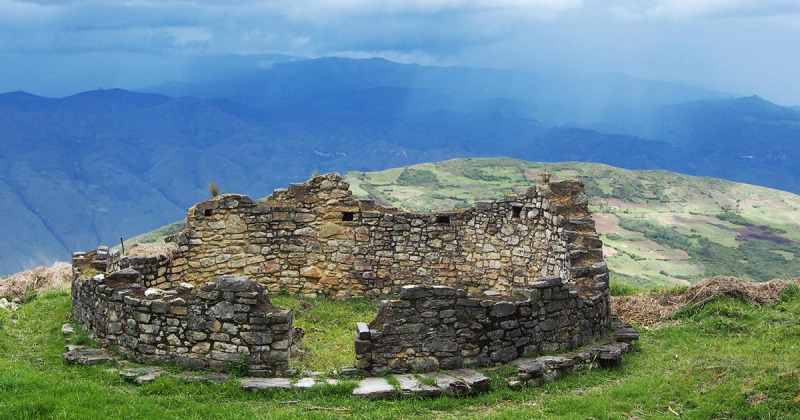
Photo: peruforless -
Choquequirao is a little-known Incan city in southern Peru that may have served as the civilization's final refuge. Choquequirao is similar in style and architecture to the far more well-known Machu Picchu, but because of its remote location, it is almost empty of people, making it far more atmospheric and worth the effort it takes to get there.
Choquequirao, built by the Incas in the late 15th century and enlarged over the next century, is said to have acted as a regional administrative headquarters as well as a local military center. It was a crucial link between Cusco and the Amazon jungle, and is thought to have served as a form of 'check point' or entrance to the Vilcabamba.
Civil conflict ravaged the Incan Empire in the 16th century, which the Conquistadors took advantage of when they arrived in the region in the early 1530s. Following the collapse of Cusco, the Inca used Choquequirao as a shelter. Following their defeat of Incan soldiers in 1572, the Spanish never discovered it — or at least never wrote about it.
The majority of visitors opt for a guided hike to Choquequirao; having someone describe the site to you is quite helpful, as there is no interpretation available. It's not for the faint of heart, but those who make it to the cloud forest will be rewarded handsomely.Location: Santa Teresa, La Convención Province, Cusco Region, Perú
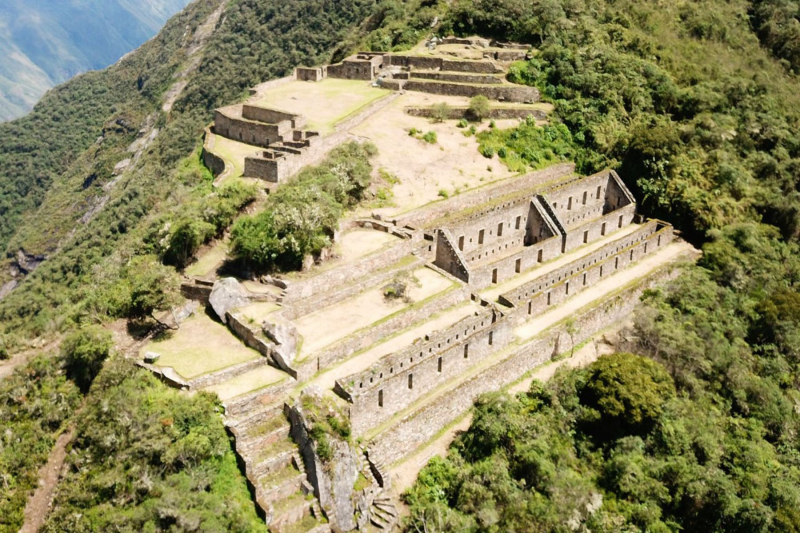
Photo: machupicchuperutreks 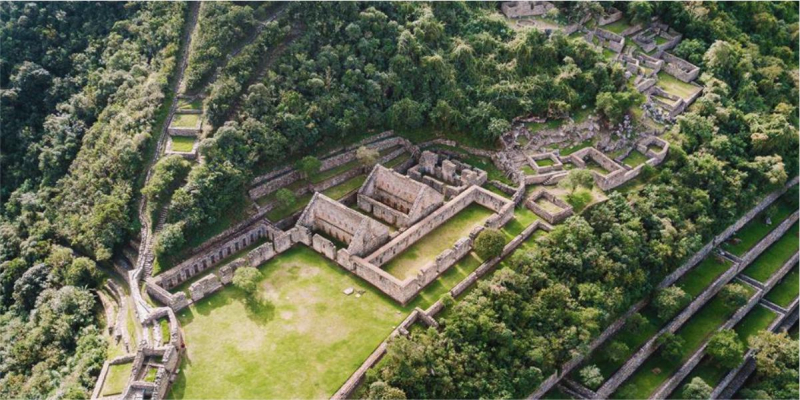
Photo: samtravelperu -
Ollantaytambo is a historic Inca citadel and modern settlement located 60 miles north of Cuzco, Peru, and is home to a number of magnificent Inca ruins.
The castle was built in the mid-15th century by the Inca emperor Pachacuti to bring nearby tribes under Inca power, although it was also utilized as a shrine. Its dominance was short-lived, however, since Manco Inca retreated to Ollantaytambo after a humiliating loss at the hands of the conquistadors at Sacsaywamán.
Ollantaytambo Ruins, which lay 2,800 meters above sea level atop a high hill, still have the original stepped walls – which doubled as terraces – as well as the remains of a royal chamber, the Temple of the Sun, and a feature known as the "Princess' Baths." Atop the terraces is the ceremonial center.
The ruins are located along the Inca Trail and are a famous tourist destination. The boleto turistico, which includes admission to 16 other local sites, is well worth the investment if you want to stay in the area for any length of time.
Location: Cuzco, Peru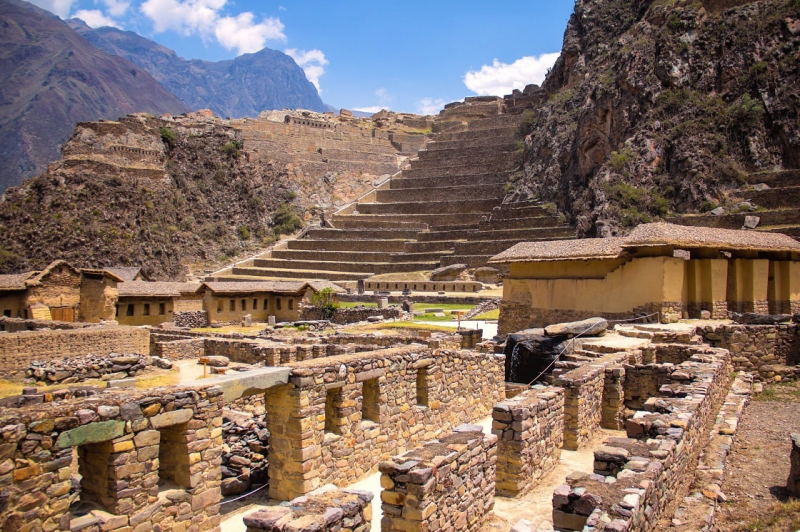
Photo: rainforestcruises 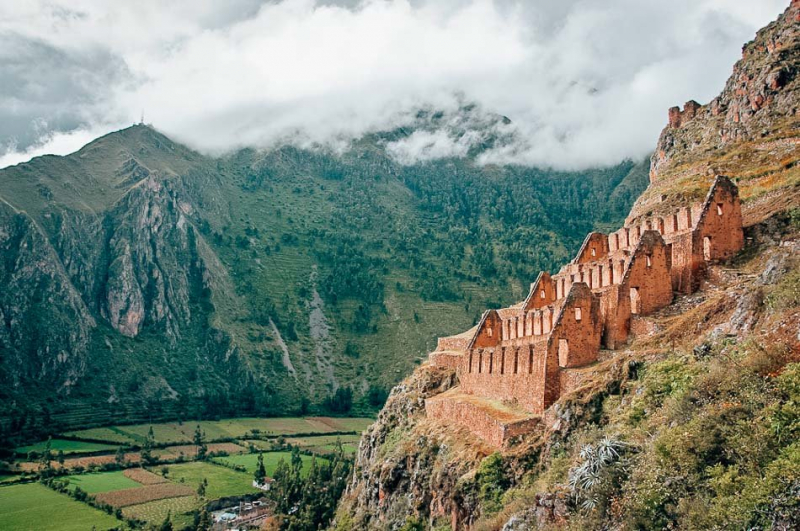
Photo: practicalwanderlust -
Chauchilla Cemetery in Nazca, Peru, is an ancient Nazca burial place. This cemetery that was used between the 2nd and 9th centuries AD. The Peruvian desert environment, combined with Nazca burial methods, ensured that the bodies were in great condition despite the passage of time, with many still having hair and skin intact. The Nazca employed resin to coat their skin and mud-brick-lined tombs to keep moisture and bacteria away.
The burial grounds were stolen and looted over the centuries, and many of the dead were scattered across the grounds or left in open graves. The Nazca bodies are still wrapped in the original cloth in which they were laid to rest, which is exceptionally well-preserved. According to the Nazca culture, all the corpses face east and are in the sitting position.
Today, mummified bodies, as well as pottery and textile fragments, clutter the ground and open graves. Some people find this type of 'dark tourism' unsettling, so it's worth thinking about how you feel about it before going. Keep in mind that these are human remains, and they should be treated with respect.Location: Chauchilla, Nazca, Peru
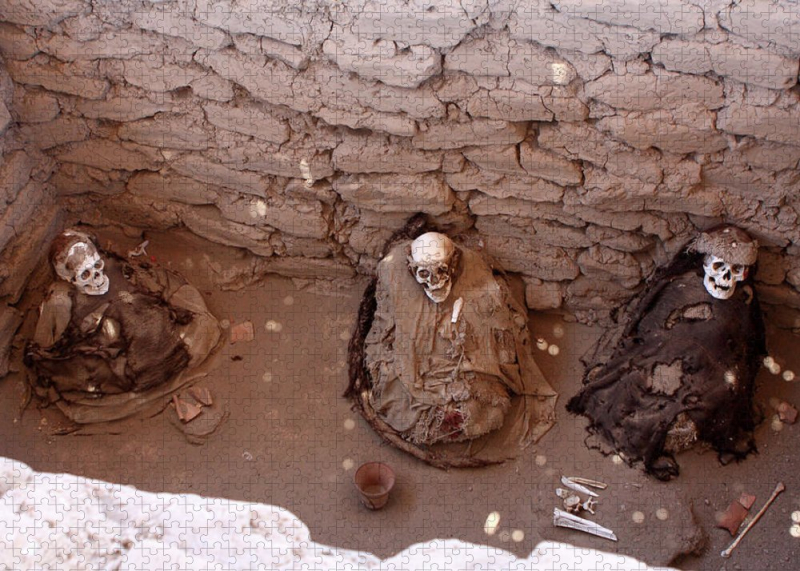
Photo: pxpuzzles 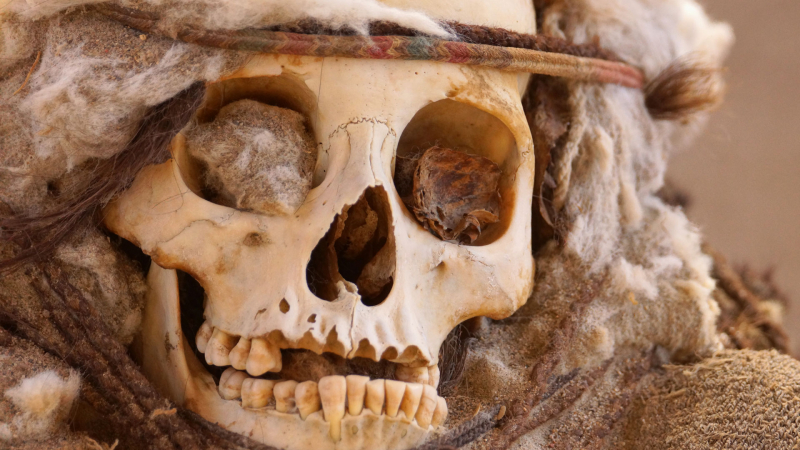
Photo: andbeyond -
The Royal Sipán Tombs were discovered in the Lambayeque Valley, and the Sipán Tomb Museum in Peru showcases the artifacts discovered there. Currently, it is a place that attracts quite a lot of tourists and is considered as one of the most beautiful historical sites in Peru.
The Royal Sipán Tomb, which dates from the fourth century AD, was the mausoleum of the Lord of Sipán, a famous warrior and important person among the Moche people. When he died, he was estimated to be roughly 1.63m (5′′3) tall and around 40 years old.
The tomb of the Lord of Sipán, a respected warlord, is supposed to have equaled Tutankhamen's in terms of the number and splendor of artifacts buried with him. The Lord of Sipán was covered in and surrounded by a wealth of gold, silver, and jewels when the Sipán Tomb was discovered.
Two of the necklaces he was wearing were made of gold and silver in the shape of peanuts, which represented the earth and were also an important food crop for Moche civilization.
The Lord of Sipán's Tomb, however, had even more astonishing findings in addition to this wealth of items. In reality, the Lord of Sipán was discovered alongside the skeletons of a dog, a llama, and even two young women, possibly his concubines, who were believed to have been sacrificed upon his death. His tomb included a total of 451 ceremonial artifacts and offerings.Location: Lambayeque, Peru
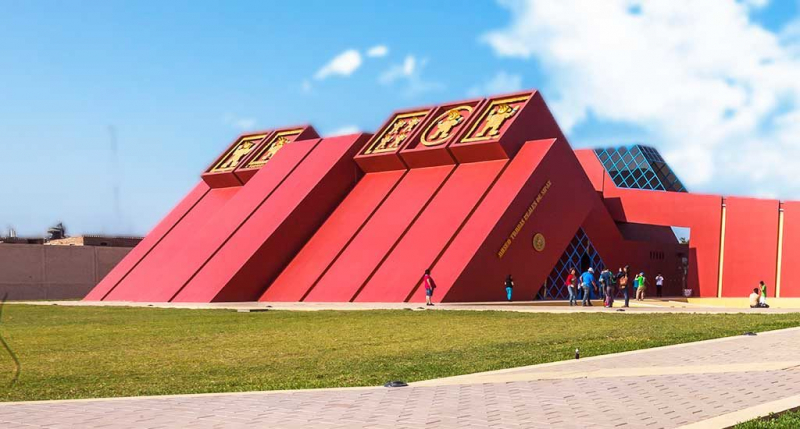
Photo: domiruthperutravel 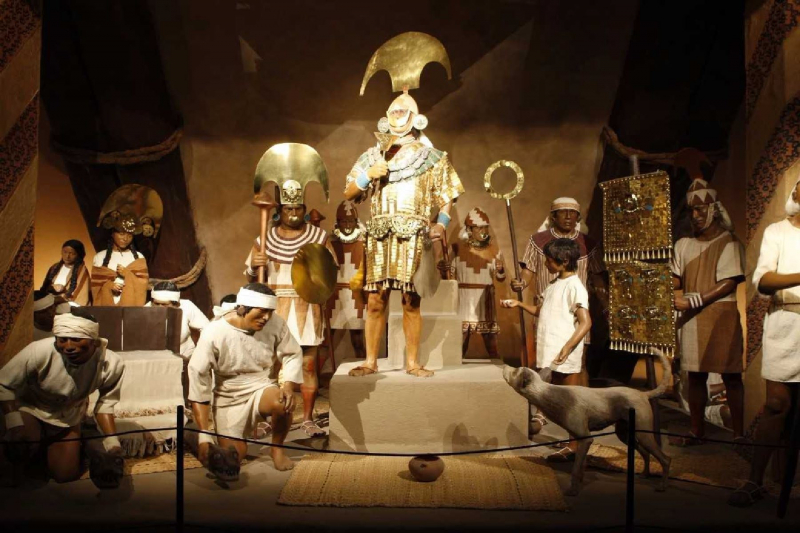
Photo: andina -
El Brujo was a Moche (early Chimu) village in Peru that existed from 100 to 700 AD. El Brjuo is most known for its three "huacas," or sacred pyramid temples, which are now archaeological sites.
Huaca Cao Viejo (also known as Huaca Blanca) is the best preserved of El Brujo's triad of temples, which are supposed to have acted as ceremonial locations. The 27-meter-high pyramid is covered with dramatic, vivid friezes depicting a variety of events ranging from mundane activities like fishing to violent portrayals, including human sacrifice.
The presence of these friezes has led archaeologists to think that El Brjuo was most likely the scene of prisoner torture and execution. The burial of a woman known as the Señora de Cao, who was buried with a variety of valuable artifacts, added to this theory. This find in 2005 was one of the most significant in Peruvian archaeology because it contradicted long-held notions that the Moche – and other pre-Columbian societies – were ruled by men.
The second most notable structure discovered is Huaca El Brujo, also known as the 'Incision Ruin' because to a deep cut in its facade created by treasure hunters. This Huaca is thought to have served as an administrative center.
The last Huaca is Huaca Prieta, which is the area's oldest settlement: archaeologists have researched it extensively, and in all honesty, archaeologists are far more interested in it than regular visitors.
The site is impressive, and the new museum next door, Museo de Cao, is a nice bonus. It houses the Señora de Cao's mummified remains, as well as several of the artifacts unearthed beside her. There's also CGI recreations of how she would have appeared.
Location: La Libertad Province, Peru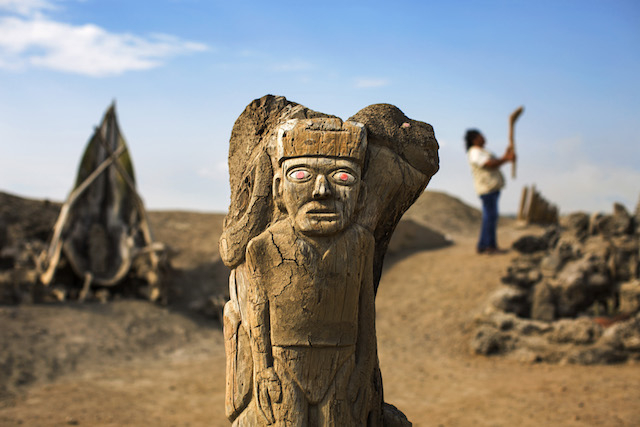
Photo: perunorth 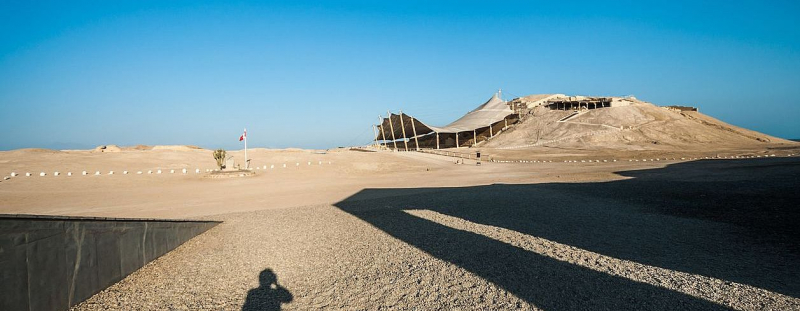
Photo: gochile -
Huaca del Sol y la Luna, or Temples of the Sun and Moon, are the most famous Moche temples in Peru.
The Moche Temples are found in northern Peru and, like many other Moche ruins, are covered in brilliant friezes of various shapes and scary figures. They were made of adobe bricks and would have taken several years to complete, with each generation adding new levels. The sites' friezes and pottery depict a variety of Moche behaviors, including religious ceremonies involving human sacrifice and the gods' relationships with them. These would have been brilliantly colored at the time: it's believed that religious leaders used psychedelic drugs, which explains why some visuals are so vivid and strange.
The site is still in the early stages of development, although there is already signage and interpretation. A short walk away is the Museo Huacas del Moche, which houses most of what was excavated from the site. It's certainly worth your time to go to the museum.
Location: Trujillo, Peru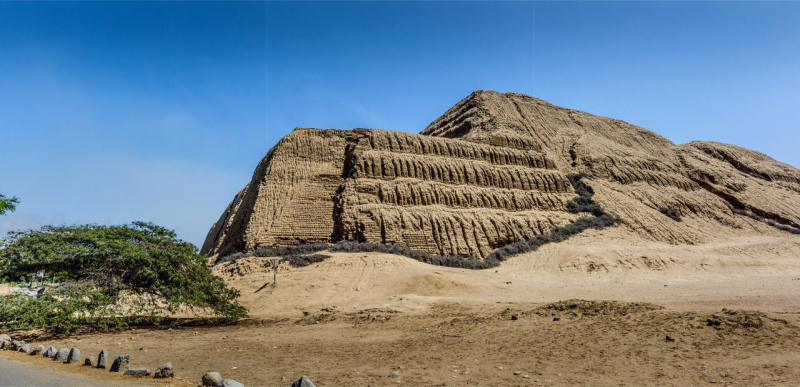
Photo: planetofhotels 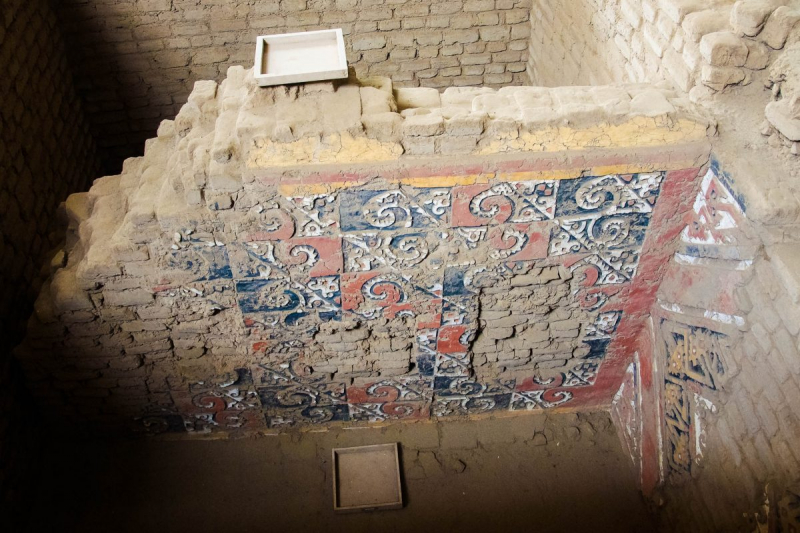
Photo: franks-travelbox































